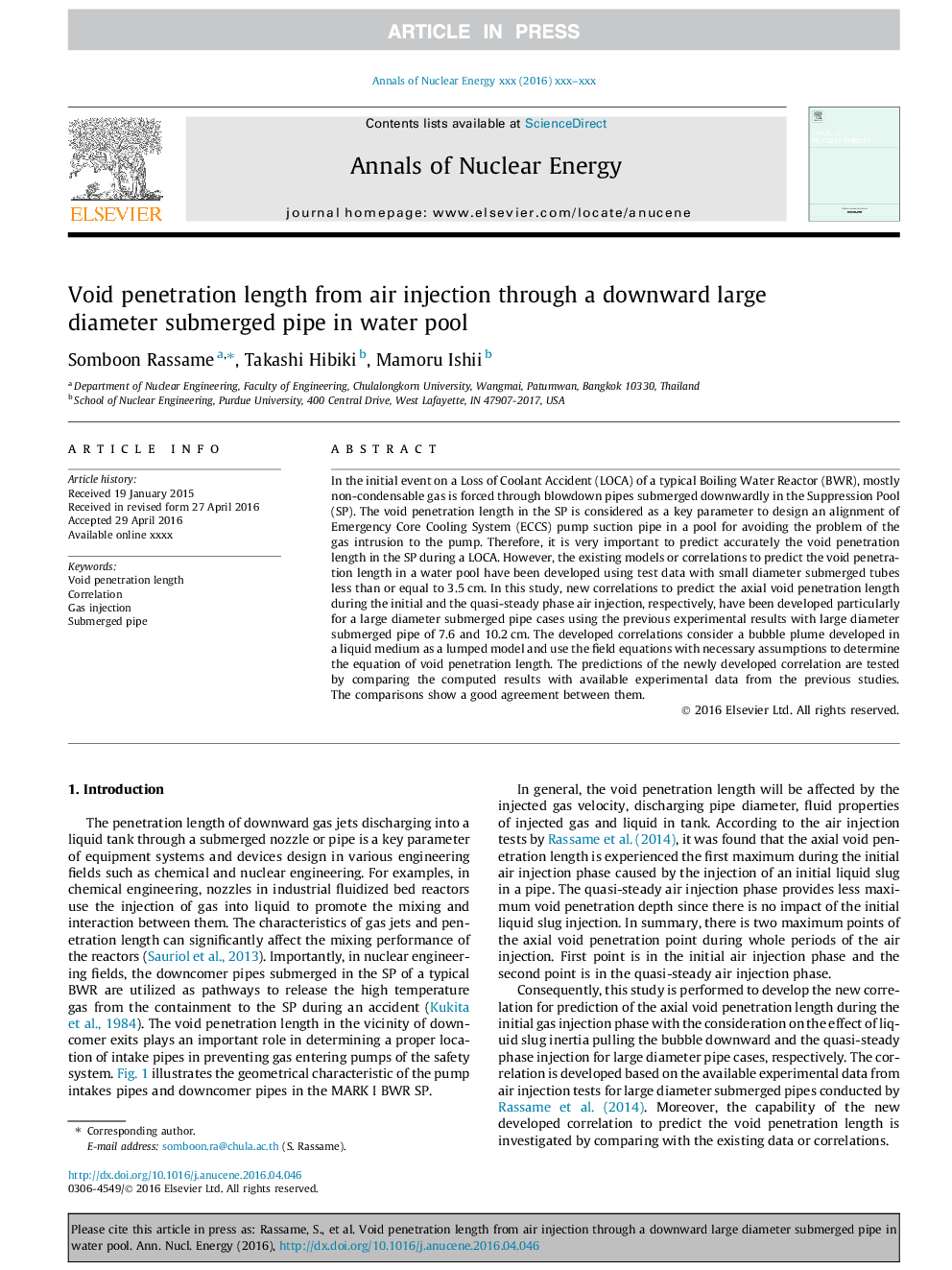| Article ID | Journal | Published Year | Pages | File Type |
|---|---|---|---|---|
| 8067870 | Annals of Nuclear Energy | 2016 | 9 Pages |
Abstract
In the initial event on a Loss of Coolant Accident (LOCA) of a typical Boiling Water Reactor (BWR), mostly non-condensable gas is forced through blowdown pipes submerged downwardly in the Suppression Pool (SP). The void penetration length in the SP is considered as a key parameter to design an alignment of Emergency Core Cooling System (ECCS) pump suction pipe in a pool for avoiding the problem of the gas intrusion to the pump. Therefore, it is very important to predict accurately the void penetration length in the SP during a LOCA. However, the existing models or correlations to predict the void penetration length in a water pool have been developed using test data with small diameter submerged tubes less than or equal to 3.5Â cm. In this study, new correlations to predict the axial void penetration length during the initial and the quasi-steady phase air injection, respectively, have been developed particularly for a large diameter submerged pipe cases using the previous experimental results with large diameter submerged pipe of 7.6 and 10.2Â cm. The developed correlations consider a bubble plume developed in a liquid medium as a lumped model and use the field equations with necessary assumptions to determine the equation of void penetration length. The predictions of the newly developed correlation are tested by comparing the computed results with available experimental data from the previous studies. The comparisons show a good agreement between them.
Keywords
Related Topics
Physical Sciences and Engineering
Energy
Energy Engineering and Power Technology
Authors
Somboon Rassame, Takashi Hibiki, Mamoru Ishii,
